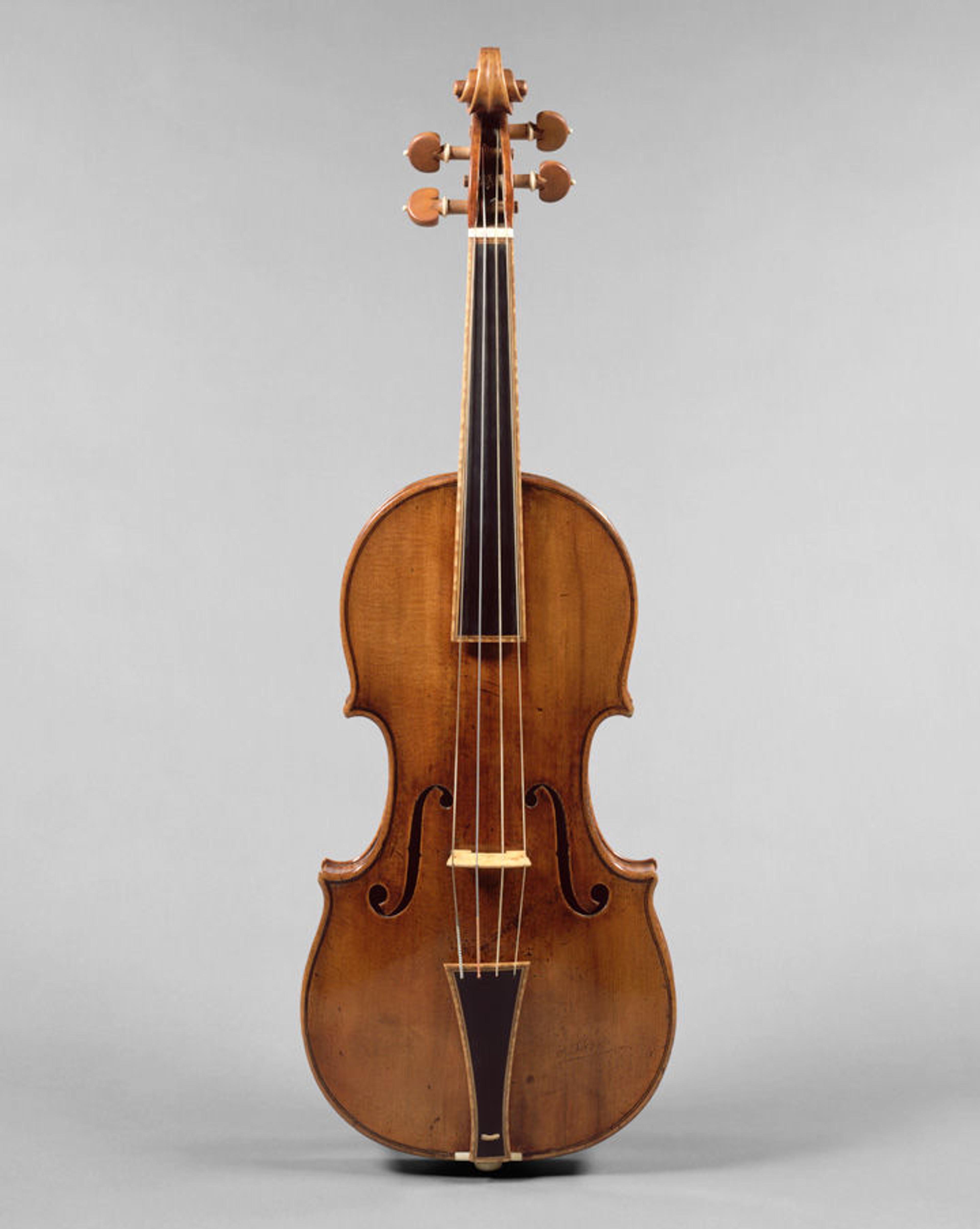Tracing the History of Antonio Stradivari's "Gould" Violin

Antonio Stradivari (Italian, 1644–1737). "The Gould" Violin, 1693. Spruce top, maple sides and back, ebony fingerboard, and gut strings. The Metropolitan Museum of Art, New York, Gift of George Gould, 1955 (55.86 a–c)
«The "Gould" violin, named by The Met to honor the instrument's donor, George Gould, was made by Antonio Stradivari in 1693. The acquisition of the violin, in 1955, was surprisingly controversial, as it is a long-pattern violin that is quite similar to the "Francesca" violin made by Stradivari in 1694 and given to the Museum in 1934 by Annie Bolton Matthews Bryant. The wood used to make the "Gould"—a two-piece maple back with a tight flame and a two-piece spruce top with an orange-brown varnish—is strikingly similar to that of the "Francesca," and, according to the dendrochronological analysis of Dr. Peter Klein, the bass side of the top of the "Gould" is made from the same tree as the treble side of the "Francesca." Although prominent figures from the violin world opposed the acquisition for this reason, including the prominent maker and dealer Rembert Wurlitzer, the Museum decided to acquire the instrument in order that it be used in concerts.»
The similarities between the "Gould" and the "Francesca" led to the decision, in 1974, to have the instrument put back into a "Baroque" setup, so that artists specializing in historically informed performance practice could use the instrument. During a visit to perform and lecture about historical performance practice at the Museum, the Belgian violinist Sigiswald Kuijken suggested The Met alter one of its Stradivari violins. After careful consideration, the Museum moved forward with its plan to have the "Gould" modified, and selected Frederick J. Lindeman, a luthier in Amsterdam, to take on the necessary work in 1975.
Lindeman based his changes on the known historical setups from the late 17th century, specifically, he said, patterning a new fingerboard and tailpiece after the "Tuscan" or "Medici" instruments. In addition, Lindeman made a shorter neck and bass bar, fitted the instrument with a new sound post, bridge, and pegs, and restrung it with gut. The items that were removed during this modification remain at the Museum for study purposes.
Surviving with the violin is an original copy of a certificate from Paris-based violin dealer Albert Caressa dated April 25, 1928, and a later set of notes by Emil Herrmann, another famous dealer and restorer of violins located in New York City. Together they provide a history of the instrument's ownership back to as early as 1820 when the owner was listed as "Marquis de Villers," seemingly Joseph-Marie David Hotman (1754–1833), who held that hereditary title at the time. In or around 1850, the violinist Charles Dancla purchased the instrument. A celebrated soloist and teacher, Dancla later became a professor at the Paris Conservatoire, where he served for more than 35 years, and his etudes and compositions are still widely used today.
By 1880, the violin had been passed to a man identified only as the celebrated amateur M. Labitte of Reims, who may have been Louis Labitte, a collector of musical manuscripts best known for owning what were then-unpublished Luigi Boccherini scores. Around 1897, the Rev. Albert Willan (1842–1914) of Copmanthorpe, York, in Great Britain, purchased the instrument and had it until around 1900, when he sold it to the Polish violinist and composer Emil Mlnarsky. A student of Leopold Auer and Nikolai Rimsky-Korsakov, Mlynarski was the founding conductor of the Warsaw Philharmonic and subsequently served as principal conductor of the Scottish Orchestra in Glasgow. The instrument was then sold to the Allgemeine Musikgesselschaft of Basel by 1918, where it was used until 1928, when the Albert Caressa firm sold the violin to George Gould of Boston.
Among the several recordings on which listeners can hear the "Gould" include performances by Sonya Monosoff on Historic Instruments in Performances: Violin Sonatas by Wolfgang Amadeus Mozart (Pleiades Records, 1977) and Manfredo Kraemer on Il Violino (BMG, 1995).
Performed by Monica Huggett with members of Juilliard 415 at The Met on March 29, 2016
Fun Fact: In season two of the popular television series Mad Men, the character Ken Cosgrove writes a short story called "The Gold Violin" that he says was inspired by an instrument he saw at The Metropolitan Museum of Art, a probable reference to the "Gould." In the episode, which is also titled "The Gold Violin," he says, "It was perfect in every way, except it couldn't make music." But as we at The Met know, the real "Gould" violin can, in fact, make beautiful music.
Related Link
Of Note: "Stradivari and the Transformation of Tradition" (March 23, 2015)
Jayson Dobney
Jayson Dobney is the Frederick P. Rose Curator in Charge in the Department of Musical Instruments.
Follow Jayson on Twitter: @JayKerrDobney